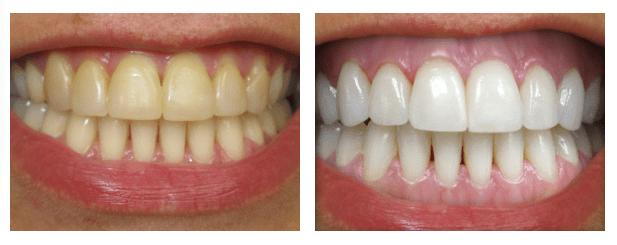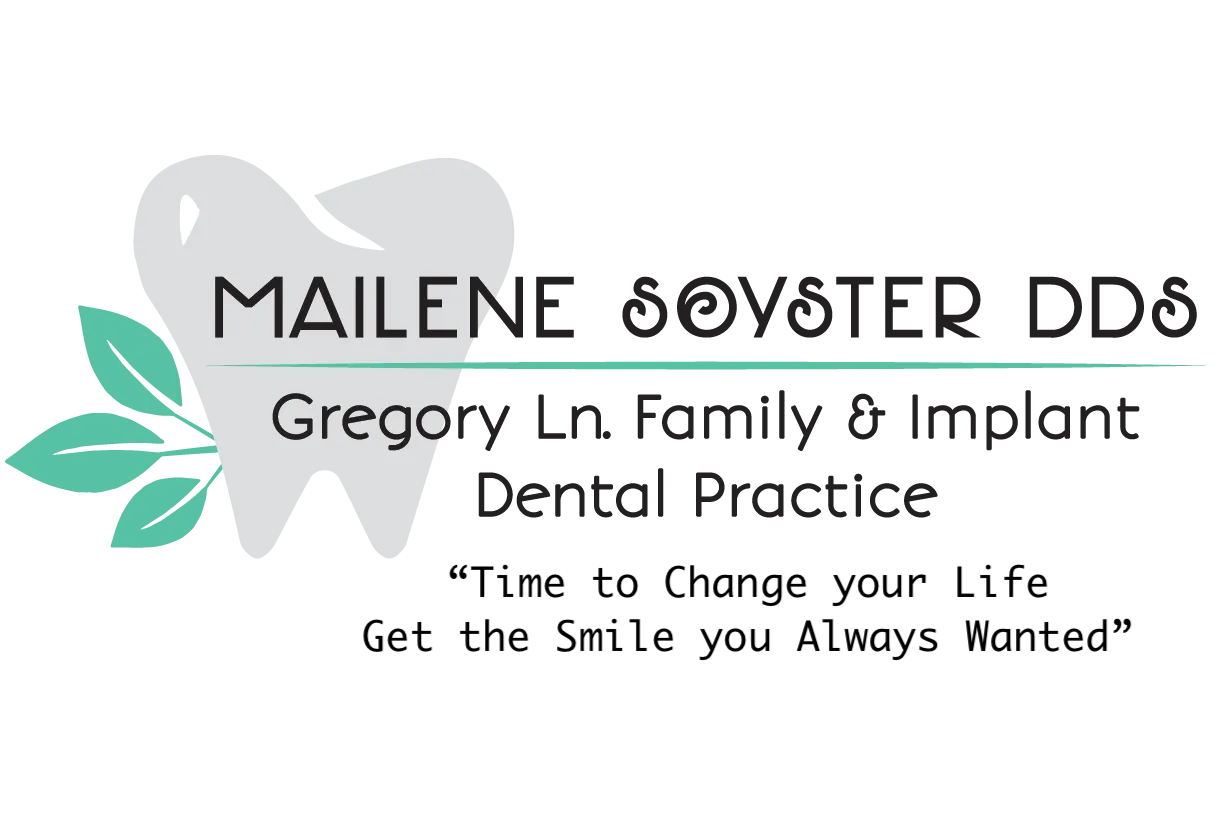
Whitening products
There are several teeth whitening systems and products including whitening toothpastes, gels or rinses, strips or trays. Whitening products obtained from a dentist which are more effective due to the strength then over-the-counter products which can still be a good option.
Tooth whitening is ideal for people who have healthy and gums. When restorations are present in the anterior (front teeth), we must be take in to account the shade of existing restorations. Individuals with yellow tones to their teeth respond best as opposed to grey shades and tetracycline stain.
Which is best for me?
Whitening toothpaste
Most toothpaste contains mild abrasives which helps remove surface stains. Some whitening toothpastes contain mild polishing agents that provide additional stain removal. Whitening toothpastes can help remove surface stains only and do not contain bleach. Whitening toothpastes can lighten the tooth's color by about one shade vs the three to eight shades of the in-office whitening systems.
Gels and Whitening Strips
Whitening gels are peroxide-based gels applied directly to the surface of your teeth. Instructions may differ depending on the strength of the peroxide, and directions on the product should be followed. The first results are seen in a few days time and final results last for about 3-4 months.
Whitening strips are extremely thin, strips that are coated with a peroxide-based whitening gel. The directions should be followed when applying strips. First results are seen in a few days time and final results are sustained for about four months.
Whitening Rinses
One of the newer products whitening products are whitening rinses. These products also include ingredients, such as hydrogen peroxide in some, which whiten teeth along with freshening breath and helping to reduce dental plaque and gum disease. Easy as 123, just swish the rinse around in your mouth for twice a day before brushing your teeth for 1 minute. Manufacturers say it may take 12 weeks to see results. We must take in account that since whitening rinse is only in contacts the teeth for such a short time (only two minutes day compared to 30 minutes for many strips) it may have less of an effect then the over-the-counter whitening products.
Whitening Trays
Whitening tray systems, can be purchased over-the-counter or from your dental office. The trays (mouth guard type trays) are filled with a gel whitening solution that contains a peroxide-bleaching agent. The tray is worn for a period of time, usually a couple of hours a day to every day during the night for up to four weeks the length of time and days/nights used depends desired level of whitening and the degree of discoloration.
In-Office Whitening
Professional whitening products contain carbamide peroxide or hydrogen peroxide that helps lighten the color deep in the tooth from three to eight shades lighter.
In-office bleaching is the fastest way to whiten teeth, results are seen in just one, 30- to 60-minute treatment. With in-office bleaching, the whitening product is applied directly to the teeth, sometimes products can be used in combination with heat, a special light, or a laser. If teeth are heavily stained it may take more then one visit to achieve dramatic results.
Tray-Based Tooth Whiteners
Tray-based tooth whitening systems can be over-the-counter or from a dentist. This involves filling a mouth guard-like tray with whitening gel solution (this contains a peroxide-bleaching agent.) The tray is normally from a couple of hours a day to every day during the nights, for four weeks and even longer.
Mouthpiece trays.
With dentist-supervised at-home bleaching products, an impression of your teeth will be taken and customized tray is made to fit your teeth exactly. This customization allows for the best contact between the whitening gel and teeth . A custom-made tray also minimizes the gel's contact with gum tissue.
How Long Do Whitening Effects Last?
Teeth whitening is not permanent. People who expose their teeth to foods and beverages that cause staining may see the whiteness start to fade in as little as one month. Those who avoid foods and beverages that stain may be able to wait one year or longer before whitening treatment or touch-up is needed.
The degree of whiteness will vary from individual to individual depending on the condition of the teeth, the level of staining, and the type of bleaching system used.
Bleaching agent strength
Dentist-supervised at home products and over the counter, generally contain a lower strength bleaching agent, of about a 10% to 22% carbamide peroxide content, which is equal to about 3% hydrogen peroxide. In-office, professionally applied tooth whitening products contain hydrogen peroxide in concentrations ranging from 15% to 43%.
Contraindicated for the following:
Children under the age of 16- This is because the pulp chamber ( nerve of the tooth,) is enlarged until this age. Teeth whitening under this condition could possibly irritate the pulp or cause it to become sensitive
Pregnancy- Teeth whitening is also not recommended in pregnant or lactating women.
Sensitive teeth- Individuals with sensitive teeth, receding gums, and defective restorations should consult with their dentist before teeth whitening.
Additional circumstances that whitening is not recommended for are: Active gum disease, worn enamel, cavities, and exposed roots.
It must be taken into account that fillings, crowns, and other restorations bridges do not whiten. Therefore, using a whitening agent on teeth that contain restorations will result in uneven whitening -- in this case, making the teeth without restorations appear lighter than those with restorations
Risks Associated With Whitening
The two side effects that occur most often with teeth whitening are a temporary increase in tooth sensitivity and mild irritation of the soft tissues of the mouth, particularly the gums. Both of these conditions usually are temporary and disappear within 1 to 3 days of stopping or completing treatment.
Sensitivity if experienced can reduce or eliminate it by:
*Wearing the tray for a shorter period of time
*Stop whitening your teeth for 2 to 3 days to allow teeth to adjust to the process.
*Use a high fluoride-containing product, which can help remineralize your teeth. This can be obtained at your dentist. Apply the fluoride product to the tray and wear for 4 minutes prior to and following the whitening agent.
*Brush teeth with a sensitive teeth tooth paste. These toothpastes contain potassium nitrate, which helps soothe the teeth's nerve endings.
Call Gregory Lane Family and Implant Dentistry today to ask questions and to schedule an appointment today with your Hygienist Angela Loza, RDH.
